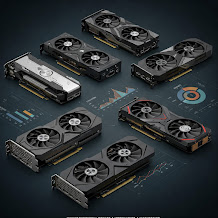AI Model Distillation: The Future of Cost-Effective AI Development
AI companies are increasingly turning to model distillation to build smaller, cheaper, and more efficient AI models. The technique gained attention after Chinese company DeepSeek used it to develop advanced AI models based on open-source systems from Meta and Alibaba.
What is AI Model Distillation?
Model distillation is the process in which a large AI model, known as a teacher model, generates training data for a smaller student model. This allows the student model to inherit knowledge from the teacher, making it highly capable and requiring fewer computational resources.
Why do AI companies use distillation?
Companies like OpenAI, Microsoft, and Meta use distillation to:
✅ Reduce costs – Training large AI models like GPT-4 and Gemini costs hundreds of millions of dollars. Distillation significantly reduces these costs.
✅ Increased efficiency – smaller models run faster and require less processing power, making AI more accessible on consumer devices like laptops and smartphones.
✅ Increased adoption of AI – companies can deploy AI more cheaply without investing in expensive infrastructure.
The rise of DeepSeek and open-source AI
DeepSeek’s success in distillation has disrupted the AI landscape. Unlike proprietary models from OpenAI and Google, DeepSeek is advancing open-source AI by allowing developers to freely modify and improve its models.
Challenges and controversies
🔴 Lost opportunities – distilled models, while efficient, often lack the depth of full-scale AI models.
🔴 Intellectual property concerns – OpenAI has accused DeepSeek of using its models for distillation, violating its terms of service.
🔴 Business model risks – Companies that rely on paid access to AI models face revenue loss as distillation makes AI cheaper.
The future of the AI distillation model
Distillation is changing the AI industry by making powerful models more accessible. However, the balance between innovation and intellectual property rights remains a challenge. As AI advances, companies must decide whether to use open-source AI or protect their own models.












Comments
Post a Comment